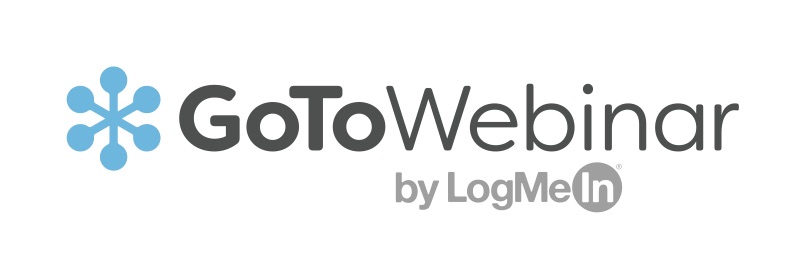One billion people use Instagram every month, and many of them are posting well-worn inspirational quotes like "be yourself: everyone else is taken" (Oscar Wilde).
Don't miss a MarketingProfs podcast, subscribe to our free newsletter!
But there is a better way. You could write your own original quotes for Instagram (and it's worth the effort). Copywriting expert Laura Belgray of Talking Shrimp wrote an incredibly popular article for Money about how she got paid $950 an hour to help a client write custom Instagram quotes.
Rest assured, however: Laura's writing skill goes well beyond blurbs and Instagram quotes.
I invited Laura to Marketing Smarts to talk about her success writing for social channels like Instagram, but also to share her tips for writing copy that converts. We talk about email marketing, writing for different formats, voice and tone, and more.
Here are a few highlights from our conversation:
Don't post quotes. Become quotable (05:36): "There's so much curation. Everybody's curating, scraping Pinterest and wherever else and their favorite Instagrams for quotes and reposting them. Some of that is fine, but...when I read something that you posted, I don't say 'yay, that person's such a great curator' or 'that brand finds the best quotes.' I look to see who said it and I'm impressed with whoever said it, but I'm not impressed with whoever found it and posted it, necessarily.
"To establish your own voice, and especially if you're good with words or have great ideas that you want to put out there...I mean there are no new ideas, but to put your own twist on the old ideas makes you stand out so much more than people who are circulating that same quote."
A unique brand voice can be a powerful differentiator for your brand (07:06): "I used to be in TV, and I wrote for networks. One in particular had a very strong, established voice that we all wrote to, and that was Nick at Nite. Nick at Nite, for anyone who's never seen it, was a channel that was filling the airtime of Nickelodeon.... During the day, kids would watch, and then at night they would [air] old shows, reruns of Leave it to Beaver, and Father Knows Best, and Green Acres, and all those shows.
"There were other networks showing those same shows, some of them. So Nick at Nite had to give you a reason to watch on Nick at Nite instead of going over to TBS to watch Leave it to Beaver, and the reason was their point of view, their voice, their attitude. They made it the place for classic TV, and they did that largely through that brand voice.
"It was sort of a tongue-in-cheek, 1950s, 'gee, isn't that swell' type of voice and attitude. We understood the satire of it.... And we all had to write to that. We all understood that the voice, the attitude is curatorial, friendly, somewhat educational, and mock formal. So that's what we all adopted and it worked."
Social followers are great, but your email subscribers are more valuable, so take care of them (11:55): "First of all, put [your content] where the most people are going to see it. I have way more followers on Instagram than I have [email] subscribers. However, way more of my subscribers see each email than followers see each (and like and engage with) each Instagram post. On Instagram, you're subject to an algorithm.
"The people who follow you can have hundreds of thousands of people they follow on Instagram, and who knows what percentage of those people will see any one post of yours and engage with it. They're scrolling, scrolling, scrolling.
"Whereas if you land in somebody's [email] inbox, they're going to see it. If your subject line is engaging enough, they're going to open it. And they're probably going to read it. If your writing is good, they're going to take the time to read it. Because email has a different engagement factor when we're looking at it."
There are no guarantees when it comes to subject lines, but pay attention to what works (and what doesn't) for your audience (22:56): "I have found that the subject lines that are least effective are the ones that are very directive and specific, like 'how to write great subject lines.' That would actually be the least opened, whereas the ones that are vague and curiosity-provoking are the most opened, or have some emotional weight to them.
"One email I wrote recently, the subject line was 'I quit.' And that was hugely opened, because that sentence has so much emotional weight. They don't know what I quit or if that's just a sentiment that I'm projecting onto them like 'have you every said I quit.' They don't know what it is, but it's intriguing enough that they're going to open it up. And I always make sure that the preview text is intriguing too, and doesn't look 'newslettery' and doesn't repeat the subject line."
To learn more, visit TalkingShrimp.com. You can also follow Laura on Twitter at @lbelgray.
Laura and I talked about much more, including shifting your tone of voice for different channels and tracking performance metrics for your writing, so listen to the entire show, which you can do above, or download the mp3 and listen at your convenience. Of course, you can also subscribe to the Marketing Smarts podcast in iTunes or via RSS and never miss an episode!
This episode brought to you by GoTo Webinar. Visit mprofs.com/webinarkit to get your free kit loaded with guides and templates that will help you take your webinars to the next level!
GoToWebinar makes it easy to produce engaging online events. Whether you want to connect with your prospects, customers or employees, GoTo Webinar has the tools and analytics you need. Start creating interactive and educational webinars your audience will love.
Music credit: Noam Weinstein.
...sign up for free to continue reading
Don't miss a MarketingProfs podcast, subscribe to our free newsletter!
Published on November 7, 2019





 Laura Belgray, founder of
Laura Belgray, founder of 
